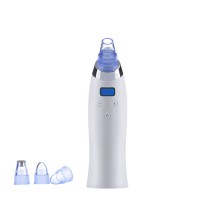-
Phone
+86- 111****
-
Address
Boluo county dragon Lotus Lake Village Town Industrial Park, China
-
E-mail
Tips for Small Space Gardens
If you’re a regular reader of this blog, you’ll know I grow all of my veggies in a small, 10-by-18-foot plot in an urban community garden here in Boston. It’s not a huge spread of land, but it keeps us in tomatoes, herbs, lettuce, and other crops for most of the summer.
I’m lucky. City dwellers, condominium owners, and others often have only a tiny patch of soil, or none at all. Is a vegetable garden out of the question for them?
Not at all. You can produce plump tomatoes, leafy lettuce, and flavorful herbs without having their roots anchored in terra firma. If you have a patio, deck, rooftop, or even a windowsill, vegetable gardening is possible. Just plant up your veggies in containers.
Here are a few tips to keep in mind:
Give plants ample sunlight
Your only requirement is at least six hours of sunlight. The light is necessary to produce fruits and the sugars that ripen them. Ample light also prevents the plants from stretching and becoming leggy. A sunny location will help the plant produce big, beautiful leaves and juicy veggies.
Not in a sunny spot? You do have an option of growing some herbs. Parsley, cilantro, mints and other herbs will grow in lower light. It’ll become slightly leggy, but with regular trimming—and using in recipes—you should have a nice flow or herbs all summer.
Find study, stable containers
When growing big, leafy crops such as tomatoes and squash, your container should be sturdy and stable, and also provide a large-ish volume of soil. With more soil, your plant has more room for root growth. More moisture will be available for the plant, as well. Herbs, on the other hand, can grow happily in smaller containers and can even be placed in a decorative pot to add some fragrant greenery to a patio table.
Look for dwarf or miniature varieties
Yes, it’s possible to grow squash in a patio pot. Patty Pan squash, Gretel eggplant, Sweet 100s cherry tomato, and bush-type beans all are great varieties for container gardening. These are bred for compact and manageable growth.
Encourage vertical growth
You don’t want your potted tomato or squash plant to grow its way across your deck. Use cages to contain tomatoes, trellises for the climbing tendrils of peas, and all manner of stakes and sticks to provide support for squashes and other vegetables. Twist ties are okay to use to connect stems to supports, but a more tender way is to use twine and form a figure 8 between the stem and the stake.
Water, water, water and fertilize
Keep in mind that soil in containers has a limited amount of water it can hold. You’ll need to water your container veggies more frequently. In the heat of summer that may mean watering several times a day. A drip irrigation watering system can help. It uses a series of tubes to deliver water directly to each pot. Used with a timer, this system can water your containers while you’re not at home—perfect for work days and vacations.
As for fertilizer, use a soluble, all-purpose fertilizer that you can mix directly into your water. Fertilize every 3 to 4 days with a half-strength solution (according to the fertilizer directions).
